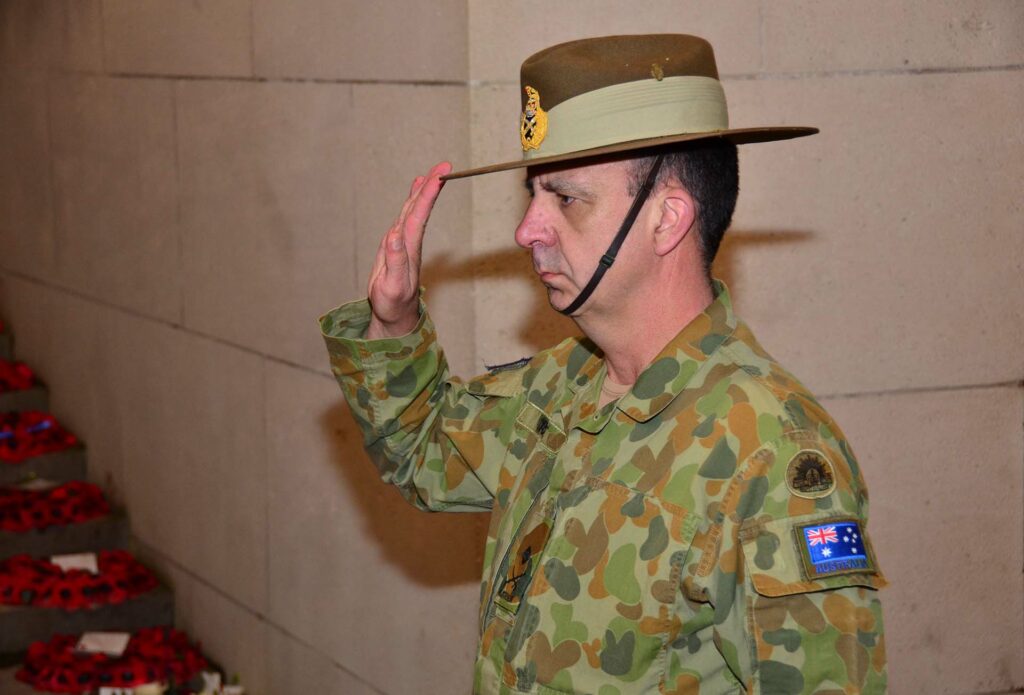
Ceremonies to commemorate one hundred years since the first Australian soldiers were killed in Belgium during World War One (WWI) will be held on 17 June 2016 in Flanders and Canberra (Australia). Privates Beaumont Jeffreys Philpott and James Jackson Mollison were reportedly coming off a scouting patrol in Messines on 17 June 1916 when they were killed during artillery and gas shelling.
In Flanders, wreath laying ceremonies will be held at the soldiers’ graves. The Last Post Association’s evening ceremony at Mein Gate in Ypres/Ieper on 17 June will also be dedicated to the two men. In Australia the soldiers’ sacrifice will be commemorated on the same day at a ceremony at the Australian War Memorial in Canberra, which will include the ‘Last Post’.
Draft schedule for Commemorations in Flanders
James Mollison was born in 1889, one of eight children of Andrew and Mary Mollison of Glasgow, Scotland. Known to his family and friends as Jim, he spent his formative years growing up in Radford in Nottinghamshire, England, where he attended Huntingdon Street High School. Both parents died while he was at school, and Mollison was raised by his older sister Elise until he was old enough to start work as a butcher. In 1910, aged 21, he and his brother Alfred immigrated to Brisbane, where Jim worked as a bridge builder for the Queensland Railways.
Mollison enlisted in the Australian Imperial Force in May 1915, and after a period of training sailed for Egypt several weeks later with a reinforcement group for the 25th Battalion. The battalion landed on Gallipoli in early September and reinforced the depleted New Zealand and Australian Division to the north of the Anzac positions, although its time in the line was relatively quiet.
Mollison was evacuated to Egypt with enteric fever in October, and spent the following weeks resting and recovering in hospital. By the time he returned to the battalion in January 1916 it had been evacuated from Gallipoli and was training near Cairo in preparation for its departure for the Western Front.
The 25th Battalion arrived in France in March 1916 and, along with the rest of the 2nd Division, entered the trenches for the first time in the relatively quiet “nursery” sector near the town of Armentières. Here the troops learned the rigours and routine of fighting in France. While the days were spent improving their defences, by night the men patrolled no man’s land and conducted trench raids on the German positions opposite.
On the 17th of June 1916 the 25th Battalion was moving north into Belgium to take up positions in the Wulverghem–Messine sector when they passed through two German gas clouds while filing up the line near Hill 63. The men had donned their gas masks and were waiting for the clouds to pass when the German artillery hit them with a combination of high-explosive and shrapnel. The battalion suffered two casualties that day – Private Beaumont Philpott, who died of a lethal dose of gas poisoning, and Private James Mollison, believed to have been killed outright by an exploding German shell.
Aged 27 at the time of his death, Mollison was buried nearby at the La Plus Douve Farm Cemetery. A small epitaph penned by his grieving sister appears on his headstone: “Loved in life, ever beloved in death.”
Private James Mollison was the first of 12,749 soldiers of the Australian Imperial Force who died while fighting in Belgium during the First World War.

Every day, at 8 o’clock in the evening. The daily act of homage.





Share on
Please complete the form in order to receive the newsletter of the Last Post Association on a regular basis.

Last Post
Association
Ceremony
Media